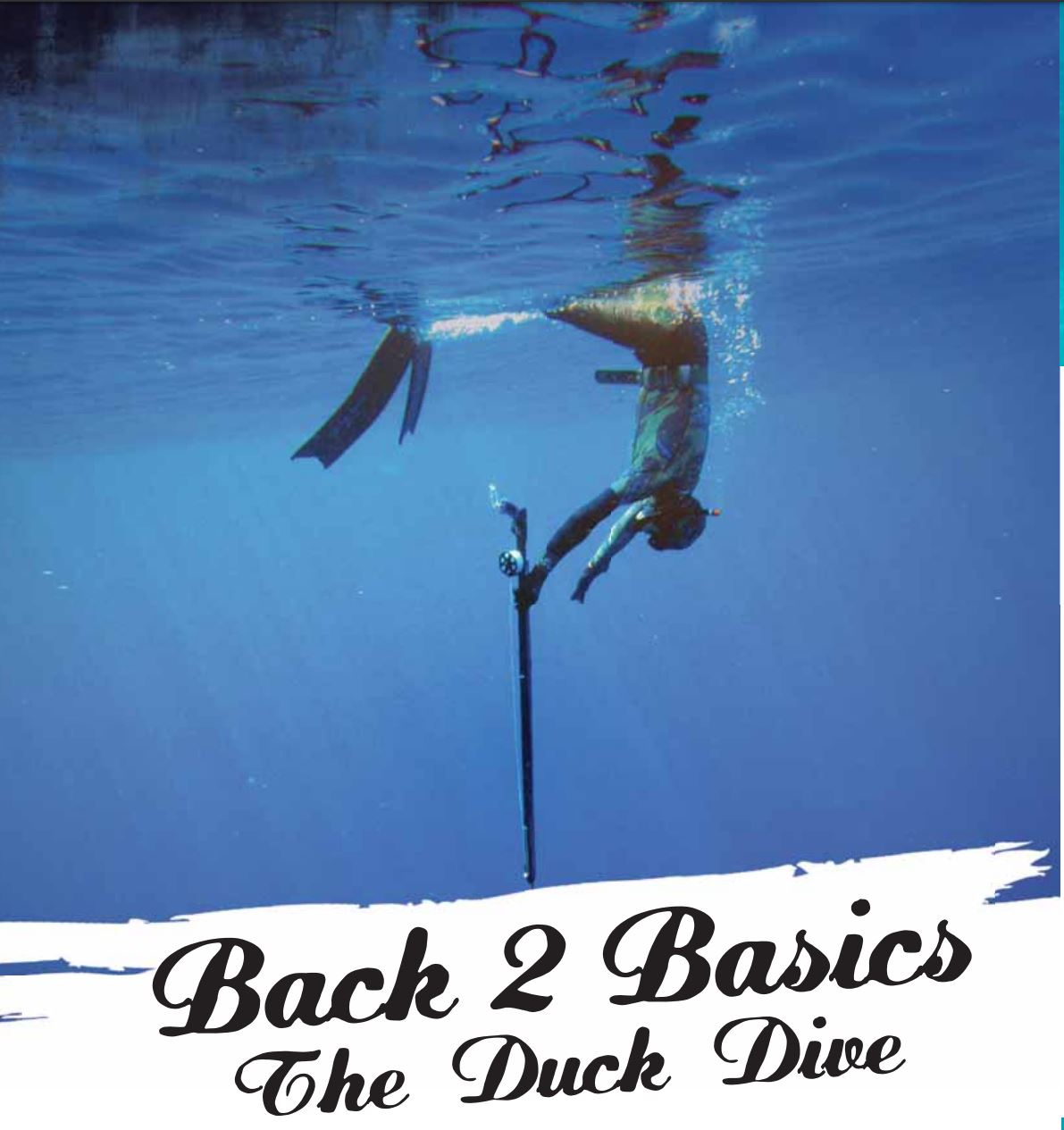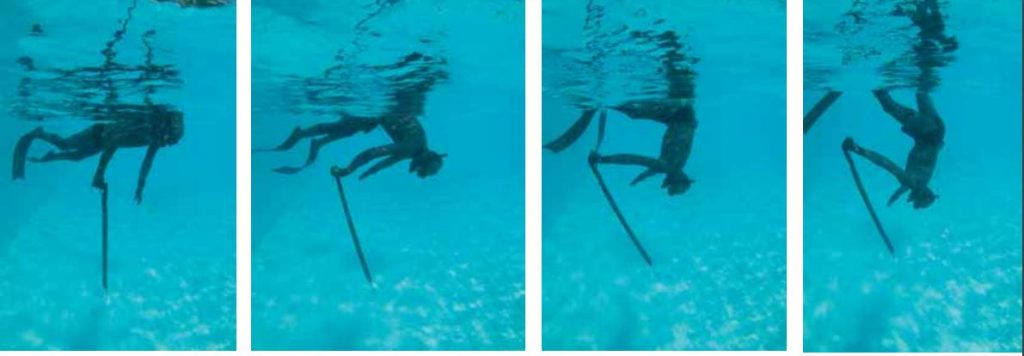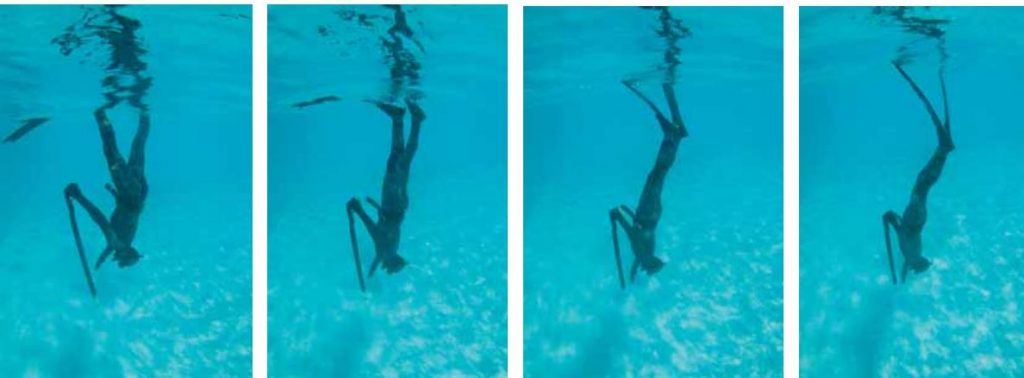
In the last Back to Basics we covered the essential techniques to spearfishing breath hold. But correct breath
hold technique is not going to give you an effective dive by itself, its what you do after your last breath that will
determine how good your dive will be.
You now start to get into the physical part of a dive and this is where efficiency is. Every step you can achieve with the least amount of effort and maximum performance is going to determine how well you use your precious oxygen.
This article will cover the ‘duck dive’. This may seem a bit trivial, but this is the starting point of your dive and if done
incorrectly will see you flapping around like a wounded seagull on the surface, making your dive very ineffective
and you will only chase fish away.
The idea is to dive down as clean, quiet and as smooth as possible, with as much downward momentum as
possible. Now this can get really technical and most of the top guys have their own approach. This is where
you are going to have to try a few different things. The whole time, be very conscious of what you are doing in
the water. In this way you will find your own technique that suits you. You probably think it’s not something that can
be practiced, but if you practice over and over, eventually muscle memory will set your duck dives into autopilot
even when in a rush.
STEP 1:
During your final breath up, get yourself in position for the dive. Make sure you are horizontal to the surface.
This will mean you don’t have to do a total ‘U’ turn to get vertical. It will also help to have your gun hanging
down. Many guys hold their guns mid barrel, parallel to their bodies. This makes it difficult to let your arms lead
you down and is also not very streamlined. With your gun hanging vertically down, you will be able to lead with your
arms easier.
STEP 2:
As you take your last breath, raise your hands up in front of you with your gun still hanging vertically down. This
will not only help extend your rib cage and ease the last breath in, but you will have a good high starting point for your dive. The idea is to get as much weight all going in a vertical direction as possible, especially if you are diving
with lightweights. Some guys slightly raise their head and even their shoulders as well.

STEP 3:
After your last breath in, pause for a moment. Some guys take their snorkel out as well. This reduces bubbles
and reduces the chances of ‘spooking’ wary fish. I find the pause helps me to focus on the task at hand and
execute the dive properly. Drop your hand holding the gun, pushing it vertically downward. The gun has some
weight, focus on following your gun down, as if it were pulling you downward. It is absolutely key to not have your
gun veer off to an angle, as this will cause you to not descend vertically. It can help to dive next to a flasher or
vertical line to help you stay vertical.
STEP 4:
Like a slinky coil, you want to follow your hand and gun downward, but follow the same path and don’t cut the
corner. This will mean you will have to get your butt up as high as possible and arch your back through the curve. It
can help to try and look back at your fins at this point. This will not only help you get your head tucked in, but help
you arch your back. Be careful however, not to over do it and curve right around onto your back. Some guys also
drop one leg and use the one fi n to help give them lift and some forward propulsion.
STEP 5:
Next, is getting as much of your legs out the water and vertically above you. This will put weight above the surface
and help build the momentum needed to descend. There is not much to this, except to concentrate on keeping your
toes pointed and legs straight. At this point you should start to move quite quickly.

STEP 6:
Now you will need to continue the momentum by finning. Be careful however, to only start once your fins are
submerged, otherwise you will only fin in the air making unnecessary splashes and not go anywhere.
Lastly, continue to focus on keeping as vertical as possible and start your journey to the depths. The next
step goes into the actual descent and we will cover this in the next ‘Back to Basics’ article.
So whether you are a seasoned spearo, or a newbie to the sport, take some time on focusing on how you
do your duck dive. Concentrate on seeing how smooth and efficient you can be. Experiment a little as well, you
never know what you might discover.
I once forgot my weight belt on the boat, and suddenly realised how difficult it was to duck dive
without splashing around. So I have been going weight beltless as a tool to help me perfect my duck
dives. Likewise, adding weight might help you get the right motion and sensation of getting vertical easily,
especially if you are totally hacking at getting the duck dive right. Just be careful of diving too heavy and use this purely as an exercise.
